Jalapenos are a great starter plant for beginner gardeners. They’re generally quite robust and don’t require as much attention compared to other popular garden veggies.
One of the best things about jalapenos is that you can grow them indoors.
In the right pot, you can grow jalapenos from seeds or sprouts into a mature plant that will give you plenty of peppers.
Make sure your plants have the right conditions to increase your chances of gardening success. Simple fixes will help your jalapenos thrive.
If you’re interested in growing jalapenos indoors, we’ve put together a simple guide to help you from start to finish:
Table of Contents
Step 1 – Plant Seeds at the Right Time

Since you’re planting your seeds indoors, you don’t have to worry as much about temperature.
However, jalapenos seeds need a soil temperature of at least 65°F to germinate. Anything under that will not allow the seed to grow.
Because of this, it’s best to plant jalapeno seeds in spring.
Step 2 – Buy Trays and Pots
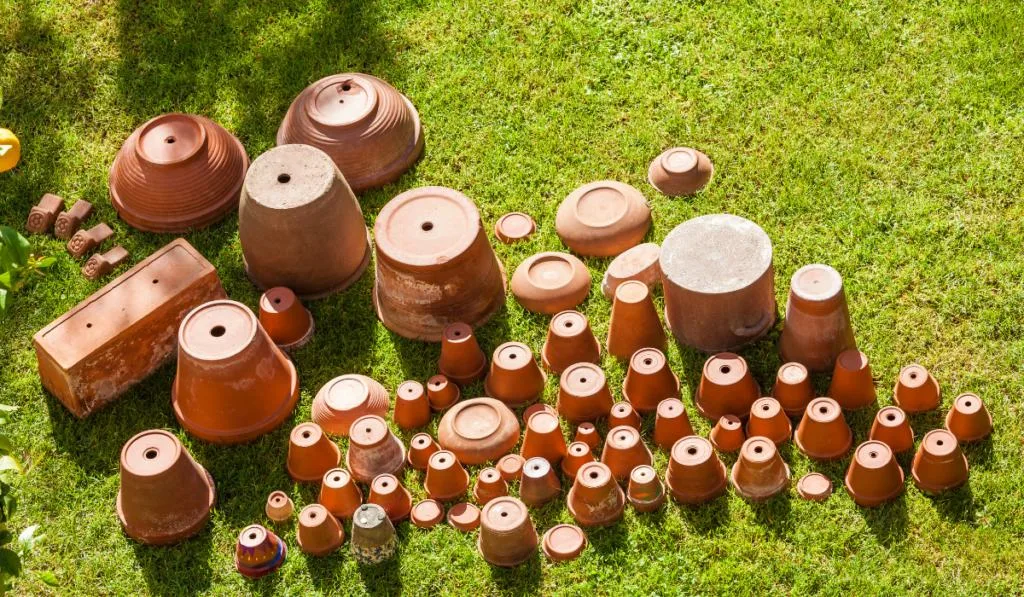
If you’re planting your jalapenos from seeds, you will need seedling trays, which look like deep ice cube trays. You can purchase these at any nursery or home improvement store.
First, fill each tray halfway with soil. Then, put the seeds in and cover them with another quarter inch of soil.
When your seeds sprout, transfer them into larger pots. You can buy these pots at the same time you buy the seedling trays.
Buy pots that will fit wherever you plan on putting them, whether on the windowsill or on the floor. If you have kids or pets, you may want to keep them higher, so they’re out of reach.
Step 3 – Buy the Right Soil

Soil is always important in gardening. The soil you buy needs to be rich and have the right composition.
Jalapeno plants do best in moist soil with a lot of organic matter.
Drain the soil well to prevent too much water buildup. If you can, use a soil mix with a neutral or slightly acidic pH.
When in doubt, ask someone working at the nursery or store. They should be able to point you in the right direction.
Fertilizer is also an option, though many people do just fine with basic composting.
Step 4 – Keep Your Jalapeno Hydrated
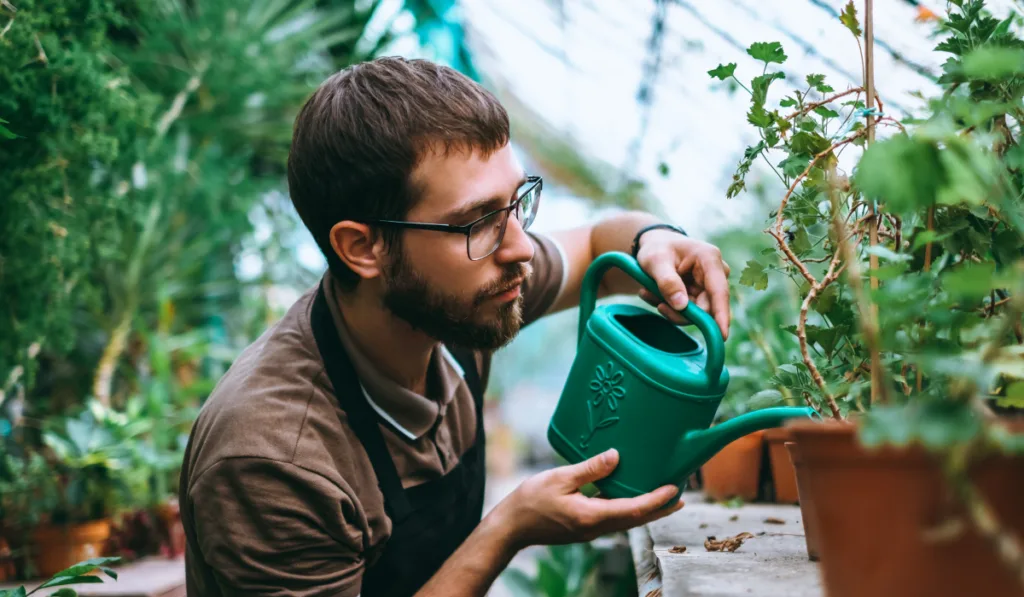
Maintaining the correct moisture level is key to successfully growing jalapenos indoors. Overwatering your plant will keep the fragile seedling or sprout from growing, and it can even kill full-grown plants.
A good rule of thumb is to keep your soil moist to the touch but not wet.
In addition, it should be cool and dark in color. You can buy mulch to layer on top of your soil to keep the moisture in.
Common signs of underwatering include light soil, crumbly soil, and soil that is dry to the touch.
Conversely, overwatering will make the soil soppy, and you’ll notice the leaves of your jalapeno plant start to wilt.
Step 5 – Transfer Your Seedlings to Pots
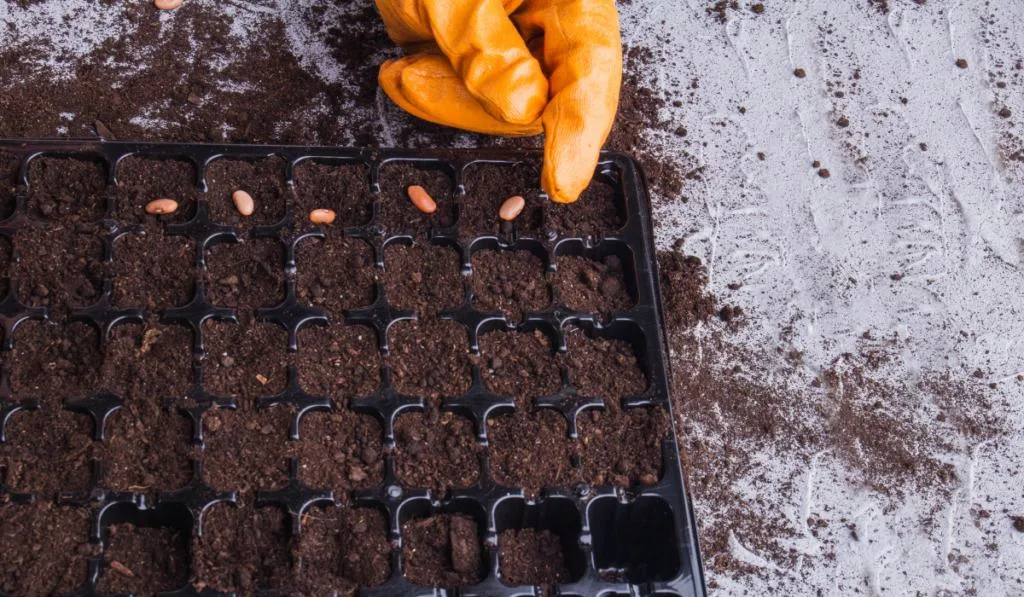
It is essential to transfer the seeds from the trays to the pots at the correct time.
On one hand, your plants need strong root systems to survive the transfer. On the other hand, keeping the seedlings in the trays too long can stunt their growth.
Typically, seedlings are ready to move into pots after 4 weeks.
Jalapeno plants grow multiple sets of leaves as they grow, so don’t be alarmed when your seedlings start to shed leaves, as this is normal.
You can gauge when to move your plants into pots when you see a third set of leaves starting to grow.
Step 6 – Put Your Jalapeno Plant in Full Sun
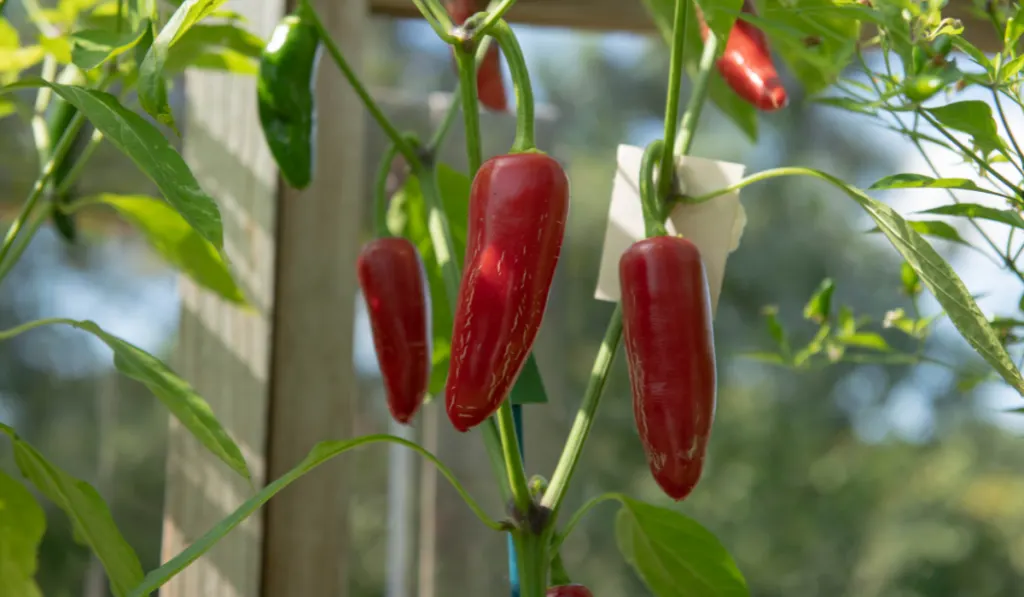
Jalapenos, like most peppers, need a lot of direct sunlight to grow well. This is why so many people keep their plants on the kitchen counter, by the deck doors, or somewhere else in the house that gets plenty of sun.
However, you’ll want to protect your plant from too much heat. While they need a lot of sun, jalapeno plants suffer if the temperature is too high.
If you see brown or yellow leaves, move your plant to a cooler location.
Overheating is an issue indoor growers face due to the heat-magnifying effect of windows and glass doors.
Step 7 – Space Out Your Plants
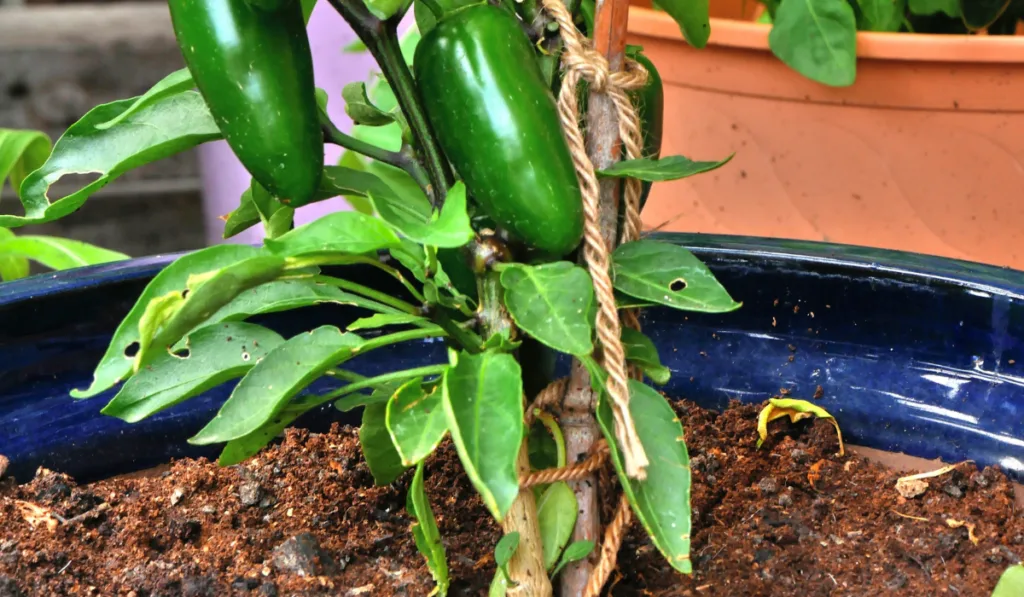
Plant your seedlings around 1 foot apart to give each plant the appropriate room. If you see them start to crowd each other out and their leaves begin to wither, relocate 1 or 2 plants to another pot.
Some people prefer bigger pots where they can grow multiple jalapeno plants in the same container. If you do this, ensure that each plant has enough space to spread its roots and grow vertically.
Step 8 – Prune the Plants

Pruning is the practice of cutting parts of the stems and leaves off the plant to encourage more rapid growth and better pepper yields.
Once your plants start to mature and sprout new branches, cut off some of the weaker branches so the nutrients feed into the stronger limbs.
Pruning isn’t a requirement, but it’s a fantastic way to get more peppers when they finally start to grow.
Step 9 – Wait for Change in Color

Some beginner gardeners mistakenly harvest their jalapeno peppers too early. Once they see the peppers on the vine, they get excited and pluck them before they are ready.
However, ripe jalapenos are dark green. Be patient and wait for them to turn a rich dark green color before taking your jalapenos off the vine.
Step 10 – Use Your Peppers

Jalapeno plants produce a lot of peppers simultaneously. Many times, people have more peppers than they know what to do with.
As your plant grows, start thinking about what you will do with your peppers.
Giving some to friends and neighbors is a fantastic idea. You can also pickle the jalapenos to keep them for longer.
Conclusion
The steps we listed are a great guide to growing jalapeno plants indoors. Give this beginner-friendly pepper plant a try!
